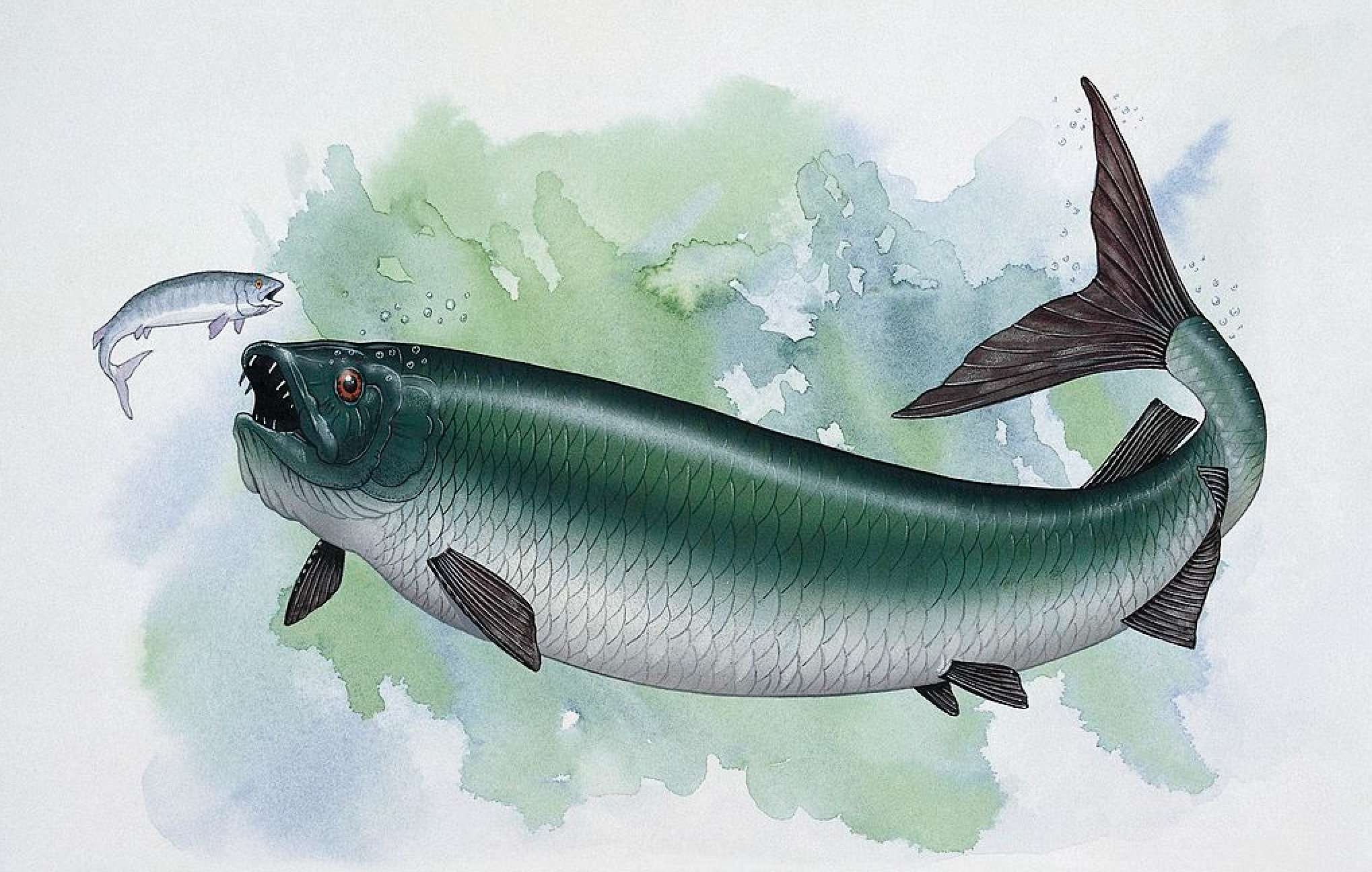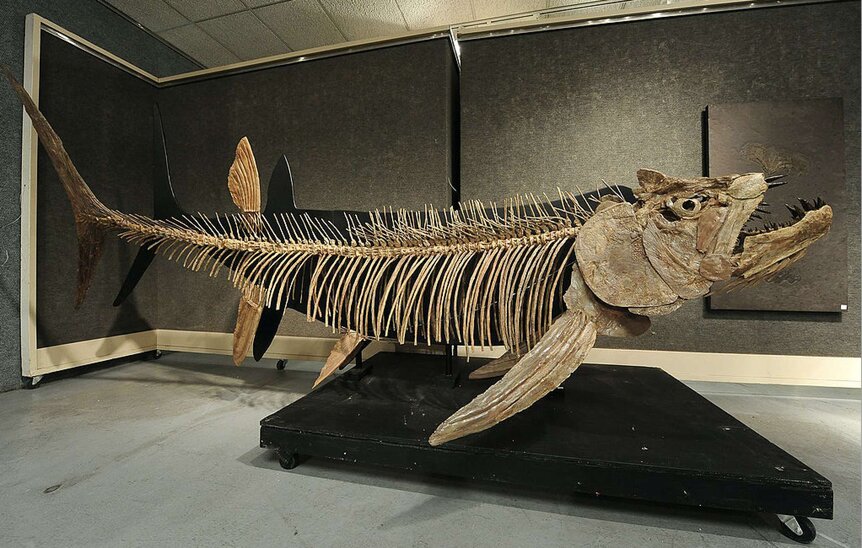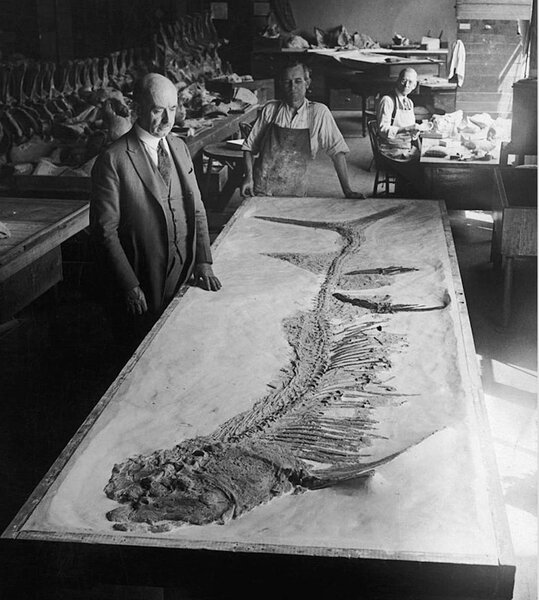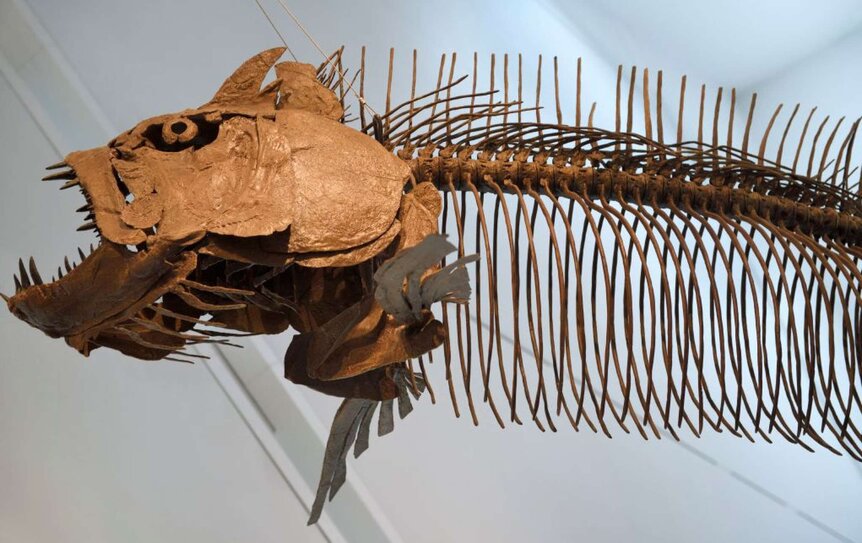Create a free profile to get unlimited access to exclusive videos, sweepstakes, and more!
Paleontologists reel in fossil of massive, 70-million-year-old predatory fish

Avid amateur anglers and sport fishermen would have had one heck of a time landing this huge prehistoric fish back at the end of the Cretaceous Period, had there been hungry primitive humans alive way back when.
A team of South American paleontologists from Buenos Aires' Museo Argentino de Ciencias Naturales “Bernardino Rivadavia,” in partnership with a colleague from Universidad Maimónides, has reeled in a humongous 70-million-year-old fossil of a monster fish that swam in primeval waters during the Age of Dinosaurs, and it's truly a whopper.
This aggressive aquatic creature was discovered in the Argentine region of Patagonia, and the results of the group's research were published recently in the online scientific journal Alcheringa: An Australasian Journal of Palaeontology.
According to an official statement, remains of this ancient 20-foot-long beast belong to the extinct genus Xiphactinus, one of the largest predatory fish ever to have existed on the planet, and were located near the Colhue Huapial lake approximately 870 miles south of the capital Buenos Aires.
Seen in the photo above, a smaller, 12-foot-long skeleton of the same variety and originally found in Kansas was put up on the block at Bonhams & Butterfields National History Auction on May 27, 2010.
This ferocious bony fish navigated the Patagonian seas during the last millennia of the Cretaceous Period, when those waters were far more temperate than today. They were widely distributed in prehistoric strata of the time in the Northern Hemisphere, but only one specimen has ever been recovered from the Southern Hemisphere, in Venezuela.
"Its body was notably slim and ended in a huge head with big jaws and teeth as sharp as needles, several centimeters long," explained lead study author Julieta de Pasqua. "Examples of this species have been found in other parts of the world, some of which even have preserved stomach contents."
Seen in the image above, Dr. James W. Gidley (left) of the Smithsonian Institution in Washington D.C. supervises the mounting procedure of the late Cretaceous fish, Xiphactinus audax, on May 5, 1926. This fossil, similar to the one found in Patagonia, was unearthed in Gove County, Kansas by paleontologist George F. Sternberg. Strangely, the impressive specimen contains the fossil of its prey, a 6-foot-long Gillicus arcuatus fish, swallowed whole, which was likely the predator's cause of death after rupturing a vital organ.
This newly recovered Xiphactinus fossil consists of a sizable upper jaw structure and abdominal vertebra, extricated from the Maastrichtian marine deposits of the Salamanca Formation in Chubut Province, Argentina.
The team's research conclusions extend the known geographical range for the genus and indicates that this ravenous, ray-finned fish was found in abundance during the Cretaceous. It's closely related to most modern fish species, but the entire Ichthyodectidae family of these predatory swimmers became extinct at the end of the Cretaceous.

















